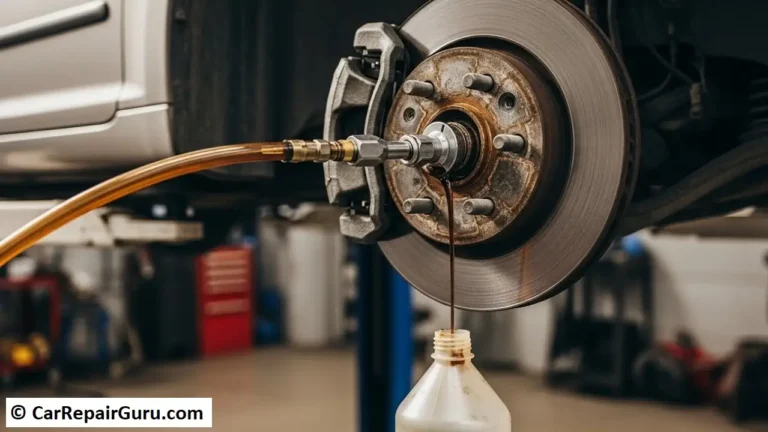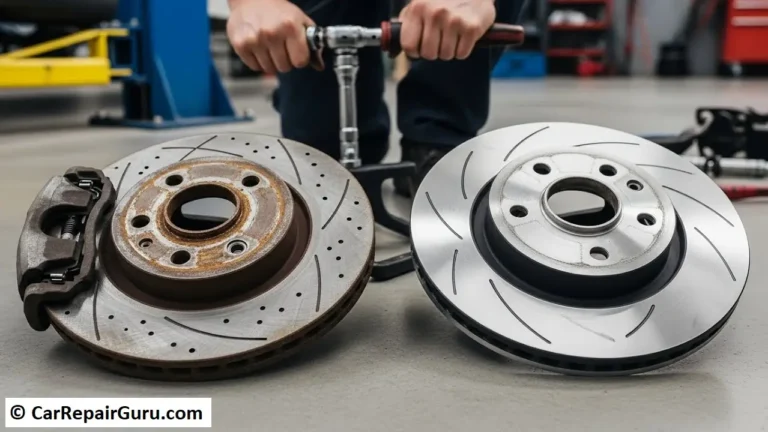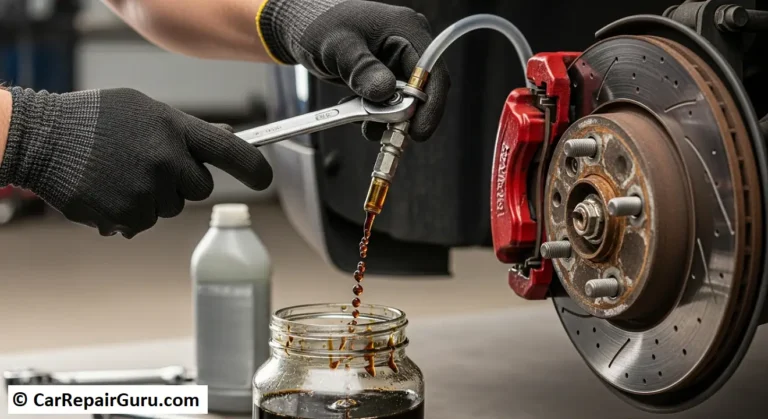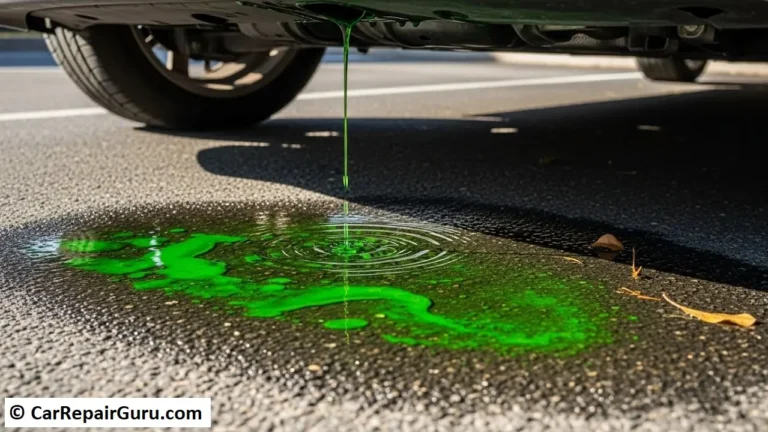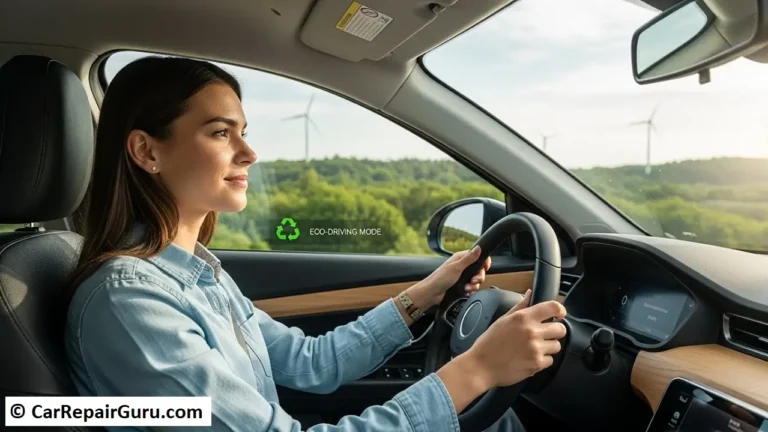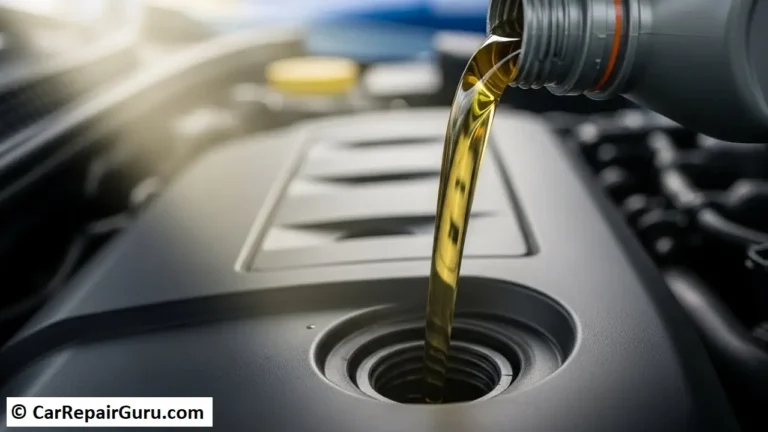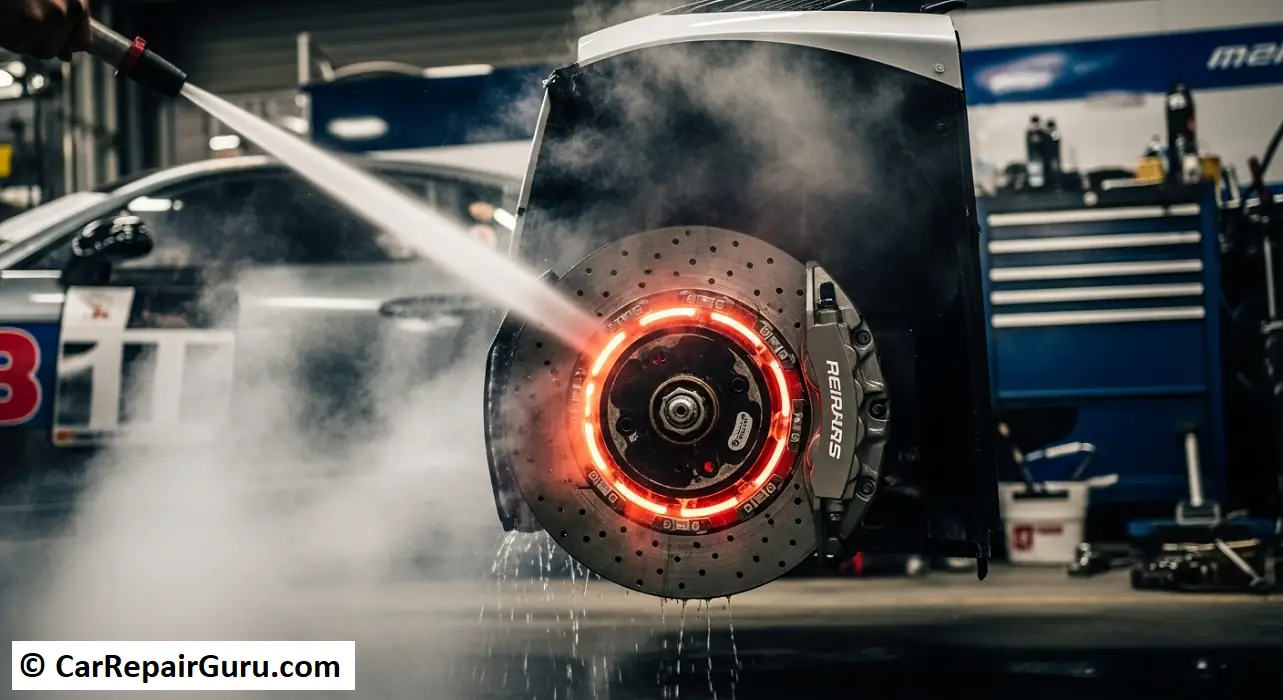
We’ve all been there. You’re descending a long, winding mountain road or towing a heavy trailer on a hot day. Suddenly, a sharp, pungent smell—like a burning carpet—fills the cabin. Or maybe you press the brake pedal, and it feels unnervingly soft and spongy, sinking much further than usual.
These aren’t just minor annoyances; they are urgent warning signs from your vehicle’s most critical safety system. Your brakes are overheating.
When brakes get too hot, they can lose their ability to stop you, a terrifying situation known as brake fade. Understanding what causes this and how to prevent it isn’t just for mechanics or car enthusiasts—it’s essential knowledge for every driver. This guide will walk you through everything you need to know to keep your brakes cool, your drives safe, and your mind at ease.
How to Know Your Brakes Are Overheating
Your car is excellent at telling you when something is wrong, and overheated brakes are no exception. If you notice any of the following signs, it’s time to pay immediate attention.
- That Awful Burning Smell: This is the most common first indicator. The intense heat is literally cooking the resin in your brake pads and any grease or road grime on the components. It’s a distinct, acrid smell you won’t forget.
- Smoke from the Wheels: If you see wisps of smoke coming from your wheel wells when you stop, you’re in a severe overheating situation. Pull over as soon as it is safe to do so.
- A Spongy or Soft Brake Pedal: This is a huge red flag. A pedal that feels mushy or sinks to the floor indicates that your brake fluid may have boiled, creating air bubbles in the lines. This is a direct precursor to total brake failure.
- Loud Squealing or Grinding: While some brake noise can be normal, a sudden, high-pitched squeal that appears during heavy braking can be a sign of super-heated brake pads glazing over.
- Reduced Stopping Power (Brake Fade): The most dangerous sign of all. You’re pushing the brake pedal, but the car isn’t slowing down as it should. It feels like you’re trying to stop on a patch of ice.
- Vibration or Juddering: If you feel a shaking through the steering wheel or a pulsing in the brake pedal, it could be a sign of warped rotors, often caused by past incidents of extreme overheating.
What Causes Brakes to Overheat? The 4 Main Culprits
Brake overheating isn’t random; it’s a direct result of physics. Your brakes convert the kinetic energy of your moving vehicle into thermal energy (heat) through friction. When you create more heat than the system can shed, you run into trouble. Here are the main causes:
1. Aggressive Driving:
Constantly speeding up and then braking hard at the last second, tailgating in stop-and-go traffic, or racing from light to light generates a massive amount of heat in a short period. The brakes simply don’t have time to cool down between applications.
2. Descending Steep Grades (Mountain Driving):
This is the classic scenario for overheating. If you “ride the brakes”—maintaining constant, light pressure on the pedal all the way down a mountain—the friction is continuous. The heat builds and builds with nowhere to go, quickly overwhelming the system. This is where mountain driving brake safety is paramount.
3. Towing or Hauling Heavy Loads:
Your vehicle’s brakes are designed for its own weight. When you add a 3,000-pound trailer or a truck bed full of gravel, you’ve drastically increased the energy the brakes must dissipate. Every stop requires much more force and generates significantly more heat, making towing brake safety a top priority.
4. Mechanical Issues:
Sometimes, the problem isn’t your driving—it’s the hardware. A sticking brake caliper can fail to release properly, causing a brake pad to drag constantly against the rotor. Worn-thin brake pads can’t absorb and dissipate heat effectively, and old, water-contaminated brake fluid can boil at a much lower temperature.
Understanding Brake Fade and Fluid Boil
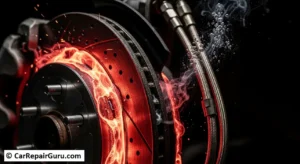
To truly appreciate the importance of prevention, it helps to know what’s happening at a mechanical level when your brakes get too hot.
What is Brake Fade? From Friction to Failure
Brake fade comes in two primary forms:
- Pad Fade: Your brake pads are made of friction material held together by a strong resin. At extreme temperatures (upwards of 600-700°F), this resin can vaporize. This creates a microscopic layer of hot gas between the pad and the rotor. The gas acts like a lubricant, and suddenly, your brake pads can’t grip the rotor effectively. You push the pedal, but the friction required to stop just isn’t there.
- Glazing: Repeated overheating can bake the surface of the brake pads and rotors into a hard, crystalline, and very smooth surface. A glazed surface is a slippery surface, which severely reduces the friction needed to slow your vehicle.
The Silent Danger – Brake Fluid Boil
This is even more dangerous than pad fade. Your brake system is hydraulic, meaning it uses fluid under pressure to work. This system relies on one crucial principle: liquid is not compressible.
However, brake fluid is hygroscopic, which is a fancy way of saying it loves to absorb water from the atmosphere. Over two or three years, your brake fluid can accumulate a significant amount of water. Water boils at 212°F (100°C), while fresh, high-quality brake fluid boils at over 400°F (204°C).
When your brakes overheat, that heat transfers through the calipers into the brake fluid. If the fluid contains water, it can boil, creating steam bubbles in your brake lines. Unlike liquid, gas is highly compressible. So when you push the brake pedal, all your effort goes into squishing those gas bubbles instead of pushing the brake pads against the rotors. The result is that terrifyingly spongy brake pedal and a complete loss of braking power.
The Ultimate Prevention Plan – Driving Techniques & Maintenance
The good news is that you have complete control over preventing brake overheating. It comes down to two key areas: how you drive and how you maintain your vehicle.
Smart Driving Techniques to Keep Brakes Cool
1. Master Engine Braking: This is the single most important technique. Engine braking is using the natural resistance of your engine to control your speed. Instead of using your brakes to slow down, downshift.
- In an Automatic: Shift from “D” (Drive) into a lower gear like “L,” “2,” “3,” or use the manual/paddle shifters to select a lower gear. The engine’s RPMs will rise, and it will actively slow the car, saving your brakes for when you truly need them.
- In a Manual: Simply shift into a lower gear (for example, from 5th to 3rd) when heading downhill.
2. Look Ahead and Coast: The cheapest brake is the one you never use. By looking far down the road, you can anticipate red lights or slowing traffic. Take your foot off the gas and let the car coast to slow down naturally. This reduces wear and prevents unnecessary heat buildup.
3. Avoid “Riding” the Brakes: Keep your foot off the brake pedal unless you are actively trying to slow down. Resting your foot on the pedal, even lightly, creates constant friction and heat.
4. Use the “Pulse” or “Snub” Braking Method: On long descents, don’t maintain constant pressure. Instead, apply the brakes firmly for a few seconds to slow down significantly (say, from 55 mph to 40 mph), then take your foot completely off the pedal for a much longer period to let them cool. Repeat as needed.
5. Lighten Your Load: The less weight your brakes have to stop, the less heat they’ll generate. Remove heavy, unnecessary items from your vehicle if you’re not using them.
Essential Maintenance and Upgrades for Brake Health
- Regular Brake Inspections: Have a trusted mechanic inspect your entire brake system at least once a year. They’ll check brake pad thickness, look for signs of warped rotors, and ensure the calipers are moving freely.
- Choose the Right Brake Pads: When it’s time for new pads, talk to your mechanic. Standard organic or ceramic pads are great for quiet, clean daily driving. If you tow or drive in the mountains, semi-metallic pads offer superior heat dissipation.
- Consider Upgraded Brake Rotors: For heavy-duty applications, slotted or cross-drilled rotors provide a pathway for hot gases and heat to escape from under the brake pad, significantly improving cooling.
- Flush and Replace Brake Fluid: This is non-negotiable. Follow your vehicle manufacturer’s recommendation (typically every 2-3 years) to flush the old, water-logged fluid and replace it with fresh fluid. This restores the boiling point and is the best defense against a spongy pedal.
High-Risk Scenarios – Mastering Mountain Descents and Towing
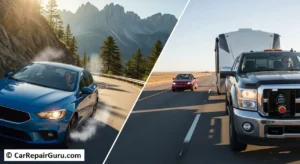
Let’s put a special focus on the two situations that cause the most trouble.
Master the Mountain – A Guide to Steep Grade Braking
- Gear Down Before You Go Down: The time to act is at the top of the hill, before you build up speed. Shift into a low gear and let the engine do the work from the start.
- Use the “Snub Braking” Technique: Rely on your engine to hold a safe speed. When you need to slow down more, press the brakes firmly to scrub off 10-15 mph, then get off them completely. This gives them crucial seconds to air-cool.
- Know When to Pull Over: On very long, steep grades (think the Rockies), there’s no shame in using a designated pull-off area to let your brakes cool for 15-20 minutes. It’s a smart, safe move.
Towing with Confidence – Protecting Your Brakes Under Load
- Increase Following Distance Dramatically: Double or even triple your normal following distance. This gives you far more time to slow down gradually, using light brake applications or just coasting.
- Install and Use a Trailer Brake Controller: If your trailer has its own electric brakes, a brake controller is a must-have. This device, mounted in your cab, applies the trailer’s brakes in sync with your vehicle’s brakes. This shares the braking load, taking enormous stress off your truck or SUV’s system.
- Consider Heavy-Duty Upgrades: If you tow frequently, investing in heavy-duty brake pads, high-performance DOT 4 brake fluid, and perhaps even vented rotors is a wise investment in safety and peace of mind.
Emergency Action – What to Do If Your Brakes Overheat While Driving
If you experience brake fade despite your best efforts, follow these steps calmly.
- Don’t Panic. Take a deep breath. Panicking will not help.
- Immediately take your foot off the gas pedal.
- Turn on your hazard lights to alert drivers around you.
- Downshift to the lowest possible gear. Use engine braking to its maximum effect. This will dramatically slow the vehicle.
- Look for a safe place to pull over. An escape ramp, an uphill shoulder, or any flat, open area is ideal.
- Gently and steadily apply the parking/emergency brake. Do not yank it, as this can lock the rear wheels.
- Once stopped, let the brakes cool for at least 45-60 minutes. Do not continue driving. And critically, never pour water on hot brakes! The sudden temperature change can crack your metal rotors.
Proactive Care is the Best Prevention
Your vehicle’s braking system is a modern marvel, but it’s not invincible. Heat is its number one enemy. By understanding the causes and signs of overheating, you can transform from a reactive driver into a proactive one.
The keys to how to keep brakes from overheating are simple to remember: use your gears, not just your brakes, and treat your brake system to the maintenance it deserves. Whether you’re navigating city traffic or a winding mountain pass, these habits will not only extend the life of your brakes but could one day save your life.
Don’t wait for that burning smell. If you’re planning a big trip or haven’t had your brakes checked in a while, schedule a professional inspection today. A little proactive care goes a long way in ensuring every journey you take is a safe one.
FAQ About Prevent Brake Overheating
How long does it take for brakes to cool down?
It depends on the severity, but a good rule of thumb is to wait at least 30-60 minutes. They need to be cool enough to touch (though please don’t actually touch them to check).
Can overheated brakes catch fire?
In extreme, rare cases, yes. The intense heat can ignite boiled-over brake fluid, grease, or other debris around the wheel.
Is it safe to drive after your brakes have overheated?
Even after cooling, it’s not recommended. Overheating can cause long-term damage, such as warped rotors or glazed pads. Cautiously drive to the nearest mechanic for a full inspection.
What does it mean to “warp” your rotors?
Warping, or lateral runout, is when the flat metal surface of the brake rotor becomes distorted from extreme heat cycles. This uneven surface causes a noticeable vibration or pulse through the brake pedal when you apply it.
